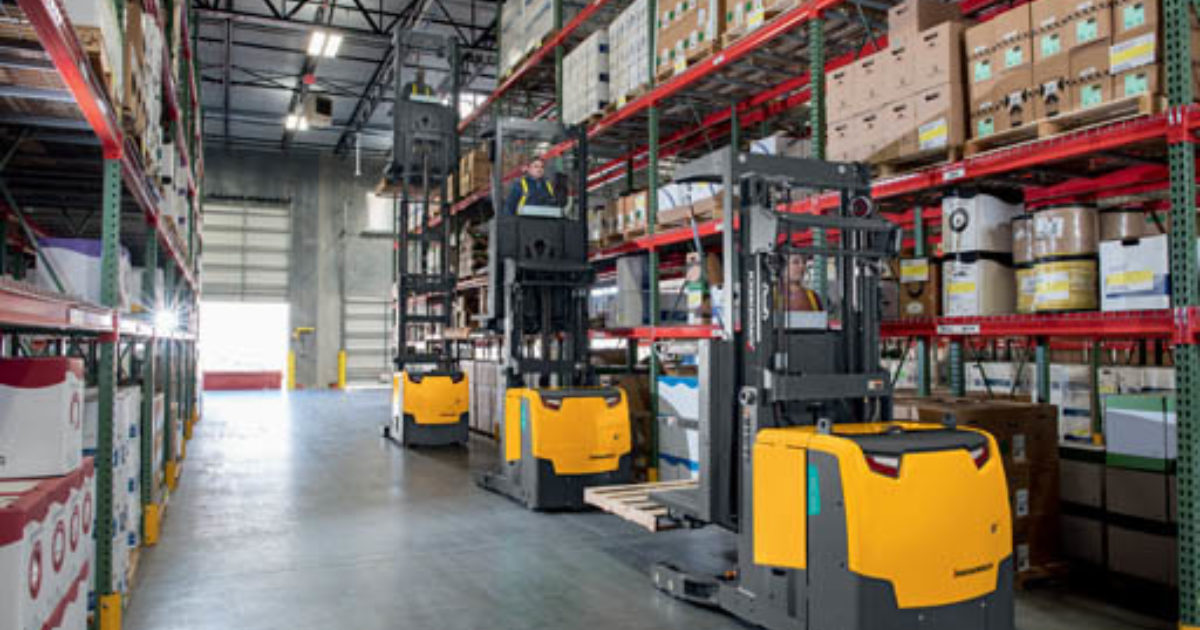Improve Warehouse Efficiency with Warehouse Shelving Racks and More

It is not quite Spring yet, but everyone could benefit from an early cleaning. Nobody likes clutter and confusing organization in their home. The same is true for warehouses, which are especially prone to inefficient layouts that can stifle productivity and even infringe on the safety of your staff. Below are the steps you should take to ensure that your warehouse is running as efficiently as possible.
[CUTOFF]Reassess the Floor Plan
For the sake of your warehouse staff, all of the components of your physical warehouse need to be logically placed and within reach. The perfect layout aims to maximize available space, minimize handling of goods, allow for easy access to goods, enable flexibility in terms of storage, and create as much work space as possible. After you have assessed the efficiency of your current layout by looking at the physical work areas and the workflow of employee tasks, it is time to reconfigure. Your warehouse work areas should, at a minimum, include an office, and areas for receiving, storage, packing, and shipping. This will vary slightly depending on your industry. Defining specific work areas encourages employee safety. For example, creating clear paths for forklifts and other equipment gives staff enough room to navigate that equipment, and having an office that overlooks the entire warehouse helps with supervision.
Install Warehouse Shelving Racks
Maximizing vertical space is equally as important as configuring the layout of your floor space. The key to installing warehouse shelving racks is to make your warehouse work for your business instead of working around the existing configuration. The industry you work in will ultimately determine the size, type, and location of storage shelves, racks, and bins. If your industry is in manufacturing, for example, equipment and production space would take priority, whereas a business working in the traditional inventory industry would focus more on storage for their stock. If you are unsure about how to tackle the arrangement of your warehouse, consider hiring a third party business that is well-versed in efficient warehouse solutions.
Organize Your Inventory
When it comes to organizing your warehouse inventory, placing your fastest-moving items in hard-to-reach places does not make much sense. Therefore, organizing your inventory in a way that makes those quick-moving items more easily accessible is a recipe for increased productivity and efficiency. To follow this logical pattern, less sought-after items should be placed towards the back.
Label Everything
For the purpose of communication, safety, and efficiency, everything should be accurately labeled. This includes but is not limited to safety hazard areas, aisles, racks, and the items themselves. Safety signs are especially important.
Review Your Warehouse’s Organization
Every now and again, it is a good idea to review your warehouse’s operations to ensure there are no kinks in the process that require reorganization. Continually reviewing this will allow for issues to be resolved in a timely manner. However, it is a delicate balance; reviewing your configuration too often could slow things down because it takes time to readjust your current configuration. Also, do not be afraid to take the opinions of your warehouse employees into account. Their input can be extremely valuable because they are constantly immersed within the warehouse environment that you are trying to improve.
Regardless of the industry you are in, creating a safe and efficient environment for your warehouse should be a priority. At Darr Equipment, we offer customized solutions for all of your configuration needs so that you can focus on staying productive.